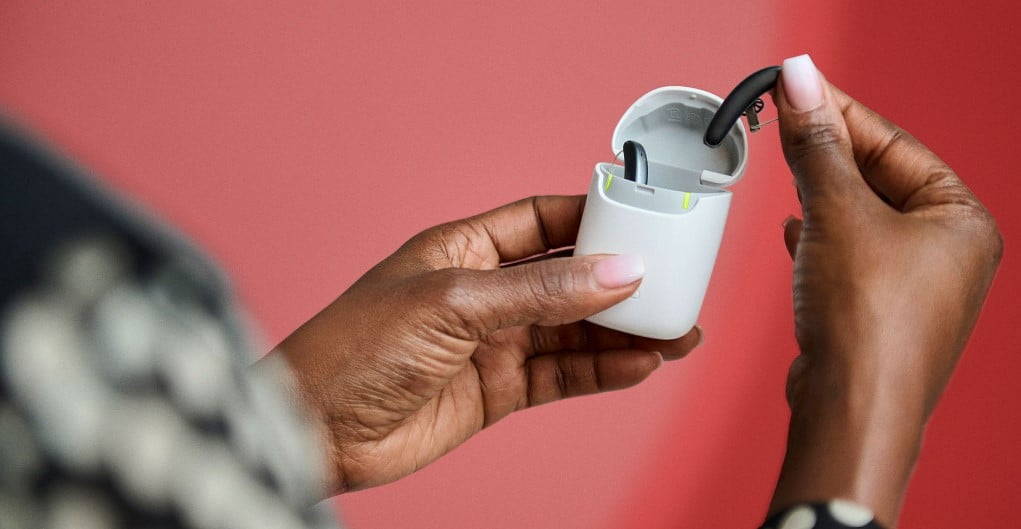by Brian Taylor, AuD, Signia

Brian Taylor, AuD
In her 2023 book Breaking the Age Code, Yale professor Becca Levy, PhD, argues that many health issues we normally consider part of aging, such as memory loss and hearing decline, are actually influenced by age stigma.
For example, one prevailing stigma tied to hearing decline implies that wearing hearing aids signifies old age – which is an undesirable perception in a society that values youth.
In addition to societal stigma, a 2020 study revealed that when individuals internalize negative perceptions of aging, it can cause unhealthy outcomes – such as cognitive decline, social isolation, unhealthy behaviors like smoking or excessive drinking, and even depression.
However, there’s a silver lining to this study – researchers found that when older individuals challenge these aging stereotypes, they are less likely to experience mental health challenges like anxiety.
This speaks to a key reason why modern hearing aid design has been so focused on overcoming stigma. Yes, it’s good for wearers aesthetically, but it’s also very, very good for their health.
Moreover, as hearing care professionals (HCPs), we play a critical role in encouraging our patients to embrace aging positively with hearing solutions they are proud to wear.

The Challenge of Hearing in Noisy Environments
Beyond stigma, the reluctance to adopt hearing aids often stems from the same issue that highlights the need for them: difficulty hearing conversations in noisy environments.
As we know, hearing loss often manifests itself in a struggle to hear voices in restaurants, parties, business meetings, busy streets, and more. Some patients find that when they do try hearing aids, sounds are amplified overall but their ability to hear in noise remains unchanged. So they put their hearing aids in a drawer, and many withdraw from social situations altogether.
This difficulty to engage with others in group conversations, and subsequent withdrawal from social settings, is unhealthy. Although hearing aid technology has come a long way in enhancing one-to-one interaction by better processing sound from in front of a wearer while dampening ambient noise from other directions, it hasn’t — until recently — been able to improve hearing in group conversations. And really, group conversations — among family, friends, and colleagues — represent the type of social engagement that’s been shown to support healthy aging.

Healthy Hearing Through Technology
Many of the impediments to healthy aging can be overcome by achieving healthy hearing, and that can only be accomplished if hearing aids can effectively eliminate the difficulty of hearing in noisy environments.
Signia engineers have spent years addressing the challenge of hearing clearly in noisy environments. They started with a technology called split processing that allowed hearing aids to divide a soundscape into two channels — a focus channel and a background channel — then process each separately so the wearer experiences better speech clarity despite the surrounding noise.
Now, they’ve taken split processing a step further with a platform that can process even more channels. Signia Integrated Xperience (IX) with RealTime Conversation Enhancement improves group conversation by further analyzing the soundscape, sensing speech from different directions, and automatically separating voices into several distinct channels for processing.
The platform can analyze nearly 200,000 data points per second and adjust as people enter or leave the conversation. It knows to add gain for active speakers while diminishing the background channel, thereby adapting to both the conversation and the environment. The wearer remains fully engaged and less likely to withdraw from social situations.
Positive Results
Early studies demonstrate how Integrated Xperience technology delivers results on both fronts of healthy hearing. From a better hearing perspective, when presented with hearing aids that include Signia IX with RealTime Conversation Enhancement, 95 percent of participants experienced better speech-in-noise performance. And in describing the real-world benefits of this performance, the vast majority of wearers — commonly 80 percent or more — agreed they were better able to contribute to conversations, feel engaged, and maintain confidence.1
Such information in the hands of hearing care professionals (HCPs) can lead to better outcomes. With a richer understanding of stigma, combined with the knowledge that social engagement breeds better health, HCPs can initiate helpful, new conversations with individuals experiencing hearing loss.
It starts by acknowledging the factors that keep people from taking corrective action, then describing how, by overcoming those factors, they’ll live healthier lives. Pretending stigma around hearing loss doesn’t exist doesn’t make it go away. By fostering environments where patients feel comfortable sharing their fears, HCPs can address them head on and provide viable solutions.
Reference:
- Jensen et al. (2024). Real-world assessment of Signia Integrated Xperience with RealTime Conversation Enhancement. Signia White Paper
About the Author
Brian Taylor, AuD, is Senior Director of Audiology at Signia, a division of WS Audiology. He is also the editor of Audiology Practices, a quarterly journal of the Academy of Doctors of Audiology, editor-at-large for Hearing Health and Technology Matters and adjunct instructor at the University of Wisconsin.






